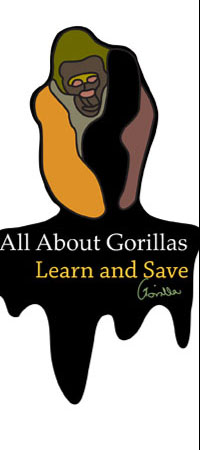|
All species of gorilla are listed by the International Union for Conservation of Nature and Natural Resources (IUCN) as endangered with the Cross River Gorilla and Mountain Gorilla listed as critically endangered, with some populations showing a decreasing population trends. Several measures have been taken by governments and non governmental organisations to combat the major threats of habitat loss, disease and poaching. Below are some of the steps that are being taken to prevent further population decrease.
Education
is an important tool for making people aware of the importance of conserving gorillas. Many organizations like Endangered Species International run outreach programmes teaching people ways to protect gorillas, their value and ways to improve hygiene to stop the spread of disease.
Combat disease
with the development of vaccinations. At present scientist are developing a vaccination against Ebola however this would be very expensive to implement.
Increased protection
is needed to protect gorillas from poachers. An increase in the number of forest rangers, areas of protection and better monitoring of populations is much needed to prevent further deaths from hunting and disease.
Eco Tourism
can provide money which can be directed towards environmental initiatives and provide locals with alternative sources of income. However in the case of gorillas it must be strictly controlled to prevent the spread of disease and disturbance to the animals.
Endangered Species International Saving Gorillas
Endangered Species International is deeply involved in saving gorillas and their habitats. We have developed an ambitious project with a strong team in the Republic of Congo to protect endangered gorillas from rampant illegal hunting and habitat destruction. Our activities have the full support and participation of local communities.
Our main goals are to protect viable populations of gorillas and to provide sustainable livelihoods to local communities in particular in the district of KakamoŽka of the eastern Republic of Congo.
Through our activities, we are (or will be):
Conducting a comprehensive survey of gorilla (distribution and population size) along the Kouilou River where illegal hunting occurs.
Recruiting, training and re-employing illegal wildlife hunters as patrol guards, field assistants, teacher helpers, and tour guides.
Conducting patrols to stop illegal hunting of gorillas within the district of KakamoŽka where gorillas are known to occur.
Creating a protected area for gorillas and other wildlife species.
Conducting educational activities at schools and training teachers on great apes, biodiversity, and conservation.
Fostering long-term livelihood alternatives. A comprehensive social economic study is underway to foster the most successful livelihood alternatives.
Raising awareness of wildlife laws and the penalties for violating them. Awareness activities are conducted in the city of Pointe Noire and the district of KakamoŽka.
Acknowledgements
For the gorilla pages, we thank Natalie Bowie and Eunkyung Chae for their great help!
ESI Congo Report of Activities / Rapport díactivitťs ESI Congo
2011 ESI Report in French / Rapport ESI Congo en franÁais
|
|
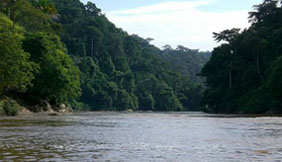
Location of ESI project to save gorillas in the Republic of Congo. © Endangered Species International
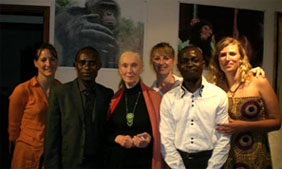
ESI team meets Jane Goodall (in the middle) in Congo. © Endangered Species International
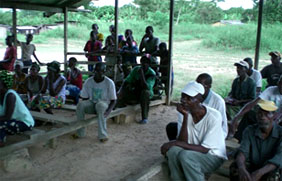
ESI conducting community environmental outreach and education in Congo. © Endangered Species International
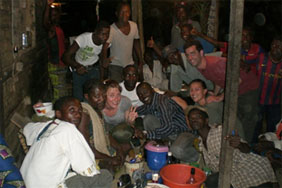
A glance of ESI team to save gorillas; the spirit is high! © Endangered Species International
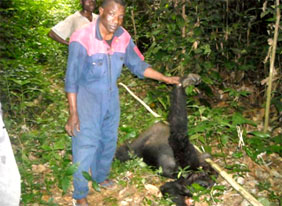
ESI reveals aggressive poaching of gorillas in the Republic of Congo. © Franck Mackoundi
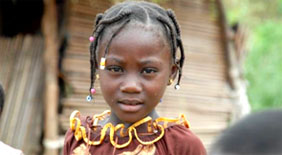
Educating children is one of the key goals to save endangered gorillas. © Pierre Fidenci
|

